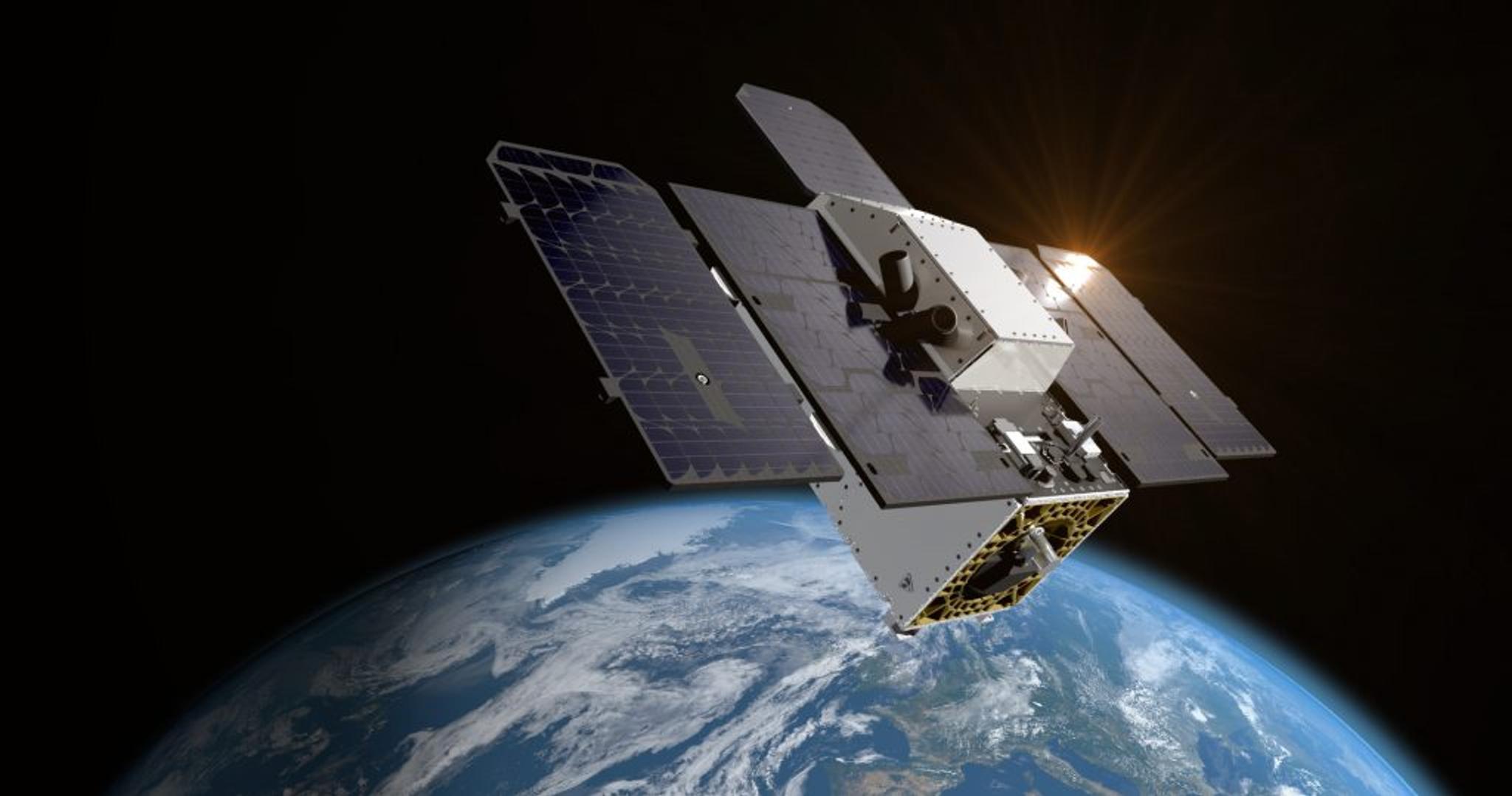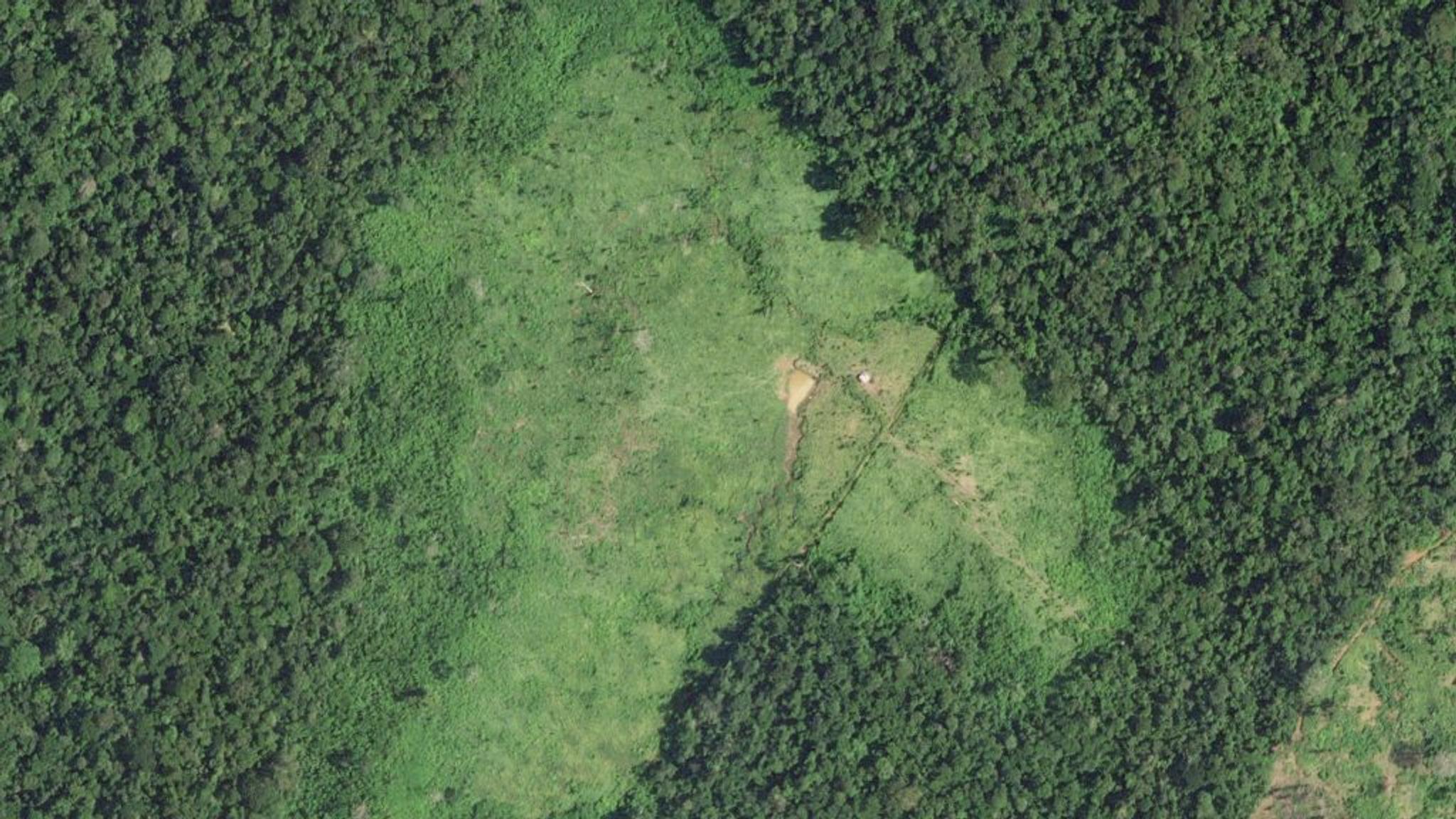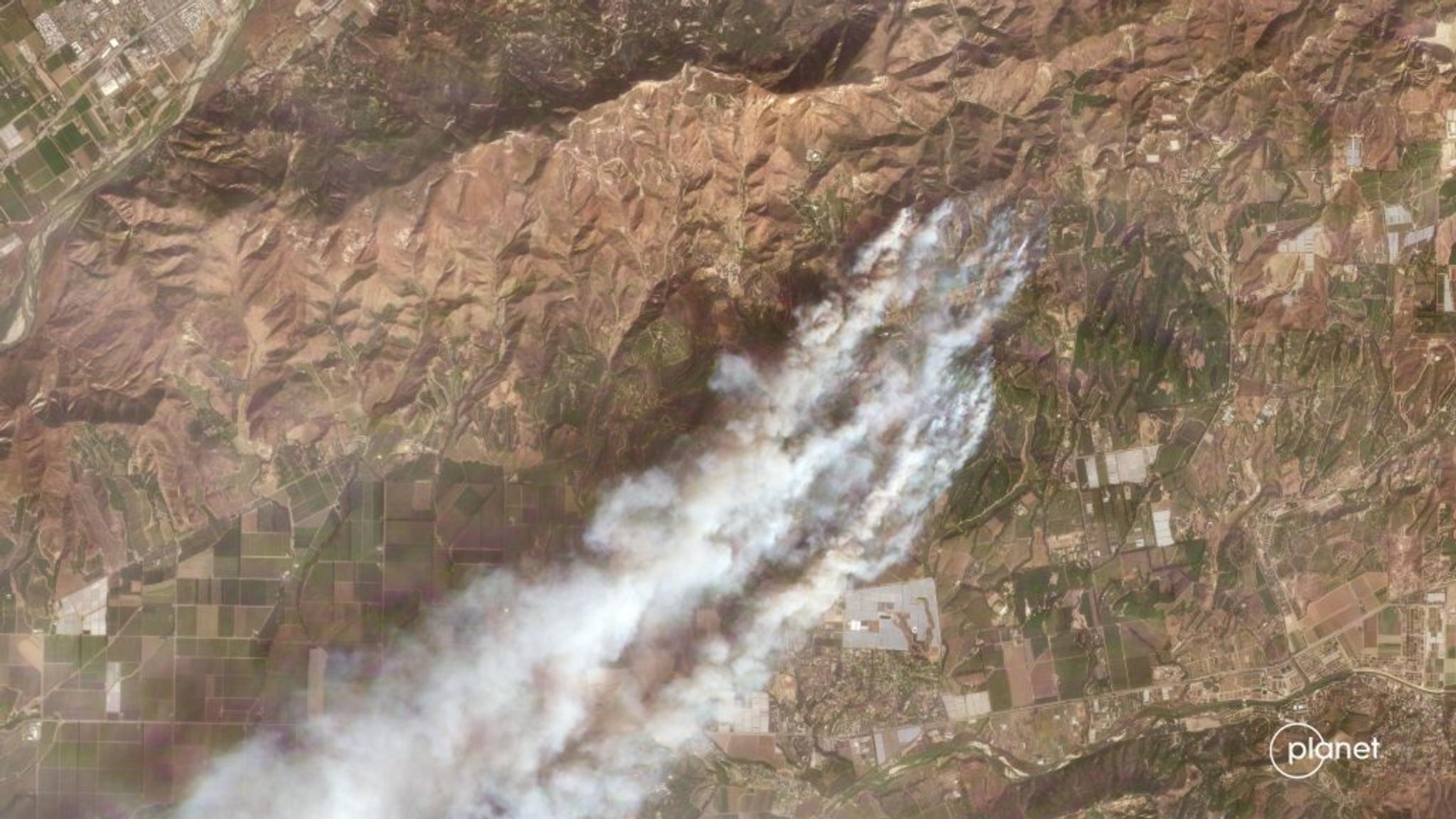The EO Industry in 2025: Emerging Technologies and Shifting Policies Usher in a New Era for Space Innovation

StoriesThis year was transformative for the space industry. We saw meteoric growth in the number of rocket launches, Earth imaging satellites capturing photos of our planet in unbelievable detail, awe-inspiring new datasets expanding our knowledge of Earth from space, and more. Planet data proved critical in understanding our world, including featuring in thousands of news articles and hundreds of scientific papers.
Some of our favorite Planet moments? There are too many to name. For me, launches always stand out, and the launch of our first hyperspectral satellite, Tanager-1, was one to remember, only to be overshadowed by the incredible hyperspectral data that is already having a positive impact on the planet.

A rendering of the Tanager-1 satellite. (Planet Labs PBC)
Another memorable moment was the release of Planet Insights Platform - Planet’s proprietary, leading platform that serves data from the largest fleet of Earth Observation satellites, now with three different constellations of satellites to supply three distinct but complementary datasets to its customers.
Finally, we can’t forget the release of the HBO documentary ‘Wild Wild Space,’ which interviewed Planet co-founders Will Marshall and Robbie Schingler and features Planet’s founding story, which always fills me with pride and awe.
As we look to 2025, I’m energized both by everything Planet has accomplished to date and by the enormous potential of what’s yet to come. As the year comes to an end, I have had many conversations with Planeteers across every department. While there are many predictions for the growth of the industry in 2025, three key themes stand out with particular excitement for the year ahead.
AI Takes Off
AI was everyone’s favorite buzzword this year, but more than that, we’re only just beginning to realize its incredible value and staying power.
We’re already delivering AI-driven solutions today - from finding newly-built roads and identifying collapsed or constructed buildings to monitoring deforestation throughout the Amazon and predicting yield potential and agronomy risks.

Deforestation in Manoel Urbano, Brazil on March 24, 2024. (Planet Labs PBC)
In 2025, EO datasets will emerge as an invaluable resource to train AI models, strengthening the power of AI’s usefulness to commercial and government users.
Large-scale AI models, known as foundation models, have been trained on extensive datasets, revolutionizing the AI ecosystem. These powerful models drive innovative technologies like ChatGPT and are reshaping our approach to intricate data challenges. To increase the power, and hence usefulness, of their outputs, these large AI companies are shifting to even larger multimodal models - including imagery, video and language. Planet's large, unique archive of over 50 petabytes of EO data offers an untapped resource to train future models and transformative potential to derive meaningful insights.
In 2025, AI and Machine Learning technologies will accelerate the processing power of Earth Observation data in near-real-time.
Planet’s latest AI powered satellite, Pelican-2, is currently at Vandenberg Space Force Base in preparation for launch early next year.
This Pelican satellite is designed to provide up to 40 cm class resolution imagery across 6 multispectral bands optimized for cross-sensor analysis. Additionally, Planet has collaborated with NVIDIA to equip Pelican-2 with the NVIDIA Jetson platform for edge AI and robotics to power on-orbit computing—with the aim of vastly reducing the time between data capture and its availability for customers. Pelican-2 is designed to rapidly convert precise spatial data into rapid insights by utilizing AI-powered solutions for use cases including object detection, vegetation and crop type classification, and disaster response.

Pelican-2 in the lab awaiting transportation to Vandenberg Space Force Base. (Planet Labs PBC)
Both using EO data to train AI and integrating AI into the EO industry expands our knowledge and accelerates data transfer from orbit to customers, enabling timely insights and swift decision-making. Further training of AI models with EO data and the expansion of the Pelican fleet represent major steps forward not just for Planet, but the industry as a whole - setting a new standard for space technology into 2025 and beyond.
New Space Sustainability Solutions Emerge
This year, the world was ravaged by more devastating climate-related disasters, including fires in Greece, floods in Brazil, hurricanes in the United States and landslides in India. Taken with rising levels of greenhouse gas emissions and strikingly low levels of carbon absorption, monitoring our planet’s health is increasingly vital as people around the world are impacted.

A mountain fire in Ventura County, California on November 6, 2024. (Planet Labs PBC)
Access to timely data is critical to understanding and adapting to how our planet changes. But, you can’t change what you can’t see.
This year, we found researchers and governments are increasingly hungry for low-touch, highly-impactful data to track carbon, methane, deforestation and more to protect the planet and keep communities safe.
In 2025, new sustainability-focused datasets will radically transform our knowledge of the planet.
Our Forest Carbon product, enabled by Planet's unique PlanetScope dataset combined with public missions such as NASA’s GEDI mission, is supplying governments and land managers with timely data to fill in the carbon picture. This dataset estimates aboveground forest carbon, tree height, and canopy cover across the world and is refreshed for users every quarter. Released earlier this year, this Forest Carbon data has already helped users move from observation to action in protecting our global forests.

Aboveground Carbon Density in Sarawak State, Malaysia in Q2 2024. (Planet Labs PBC)
Following the launch of our first hyperspectral satellite, Tanager-1, this past fall, we released first light images in just a few weeks, and our partners at Carbon Mapper have already shared its first emissions mitigation success story. This hyperspectral data can be useful for a variety of use cases including defense and intelligence monitoring, biodiversity assessments, mineral mapping, and water quality assessments.
These new and growing datasets will exponentially increase our knowledge of Earth in 2025 and beyond, so those who have the power to take action have the critical insights to do so.
Policy Changes Turn to the Space Sector
As many countries went to the polls in 2024, we are already seeing policy and regulatory shifts as new administrations outline their key priorities and budgets. While governments change, one thing remains constant: Space data truly shines when the public and private sectors come together.
Planet was founded by former NASA scientists, and it has a proud legacy of successful collaboration with governments across multiple administrations and with various agencies. Both at home and abroad, we have the expertise and technical ability to continue partnering with all levels of government as we look to what's next.
In 2025, as new policy priorities take shape, we anticipate governments turning more to space data to inform policy making, while right-sizing space regulations.
Governments have growing experience with space data and are heavily investing in space programs - a trend we’re seeing across the world. The visibility and transparency of satellite data, objective and comparable across territories, makes it very valuable to design targeted and impactful policies and also measure their impact.
Commercial space innovation has leapt forward in the last decade. New administrations bring new energy to tackling the challenge of updating and right-sizing space laws and regulations in a way that ensures responsible shared use of space resources while enabling growth and innovation in the space sector. Planet looks forward to continuing to work with policymakers worldwide on how to strike the right balance to protect the sustainability of the Low Earth Orbit environment and ensure responsible space operations while also streamlining licensing and other regulatory processes so that governments and regulators can keep pace with the lightning speed of commercial space innovation.
In 2025, the biggest policy changes we anticipate will be in disaster preparedness and response - with the EO industry ready to support.
Climate change is increasing the frequency and intensity of climate disasters, and unfortunately we see the trend accelerating in the coming year. Governments will need more than ever to improve their preparedness and response to these disasters, leveraging tech advancements. Space data has proven its value in disaster response, supporting governments and first responders in every region as they prepare and respond to their communities’ unique needs.
Now is the time for governments to leverage commercial space data.

False color PlanetScope image of flooding around the city of Sueca, Spain on October 30, 2024. (Planet Labs PBC)
As we close the chapter on 2024 and look to a new year, there is immense promise and potential for the growth of the space and EO industry. At Planet, we are proud to be at the forefront of how researchers, organizations, and governments around the world understand our changing planet. We look forward to what 2025 can bring as we continue to advance our technology, deepen our public and private partnerships, and continue leveraging space to improve life on Earth. Ad Astra!

Ready to Get Started
Connect with a member of our Sales team. We'll help you find the right products and pricing for your needs.

